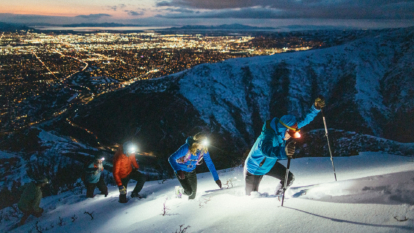Breaking Trail for Clean Air
Running Up For Air is not a race. It’s a community, a gathering of friends and a fundraiser for clean-air advocacy.
Listen to the story
All photos by Forest Woodward
Eve Davies could cry. She’s been up on the summit of Utah’s Grandeur Peak for 24 hours when she’s offered a squashed croissant, pulled proudly from the mesh back pocket of a snow- and sweat-dampened running vest.
It’s a brilliantly blue February afternoon in the Wasatch Mountains, around 2:30 p.m., and Davies stands just outside a white-and-orange dome tent, doling out hugs, high fives and water-bottle refills to out-of-breath runners. Everyone is windswept, exhausted and happy. It’s hard not to feel that way on this small, rounded prominence 3.1 miles and 2,700 vertical feet from the trailhead—close enough to Salt Lake City to be a popular local jaunt, but high up and exposed enough to feel remote. Snowy peaks sweep out to the east and north. To the west, Salt Lake City sits below a layer of smog.
Davies and her team got here at 4 p.m. the previous afternoon. They lugged up 50-pound packs, stomped out several feet of snow, set up the tent, hooked up the generators and prepared the timing system, so that when the first tiny headlamp beam popped out from the tree line below, they were ready. As a seven-year veteran, Davies has the summit aid station for the Grandeur Peak edition of Running Up For Air (RUFA) down to a science.
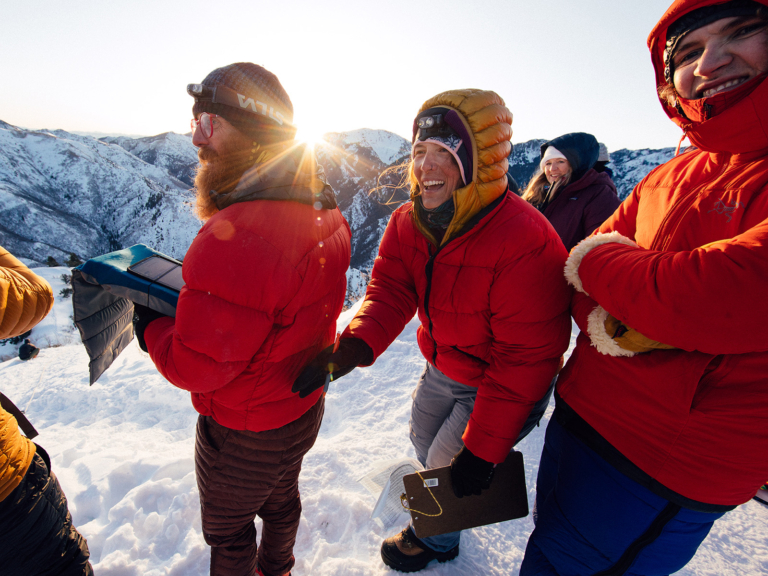
As they reach the top, music greets runners—anything from Taylor Swift to Robert Earl Keen and Shakira. Eve Davies, seen here amid a sea of orange coats, got the summit aid-station playlist from her teenage daughter. Grandeur Peak, Utah.
The event’s premise is simple. Participants spend 6, 12 or 24 hours running up and down the mountain to raise money to fight air pollution—and they do so in the middle of winter, when the smog is often at its worst. It all started in 2012 as a personal project for local runner Jared Campbell and still maintains an unassuming feel, less like a race and more like a group project and family reunion.
In fact, the men’s frontrunner, Kevin Cantwell, has brought Davies the aforementioned treat from a favorite local bakery. By this point, both Cantwell and Davies are nearing the finish line. Cantwell is 10.5 laps and roughly 65 miles in. Davies is cloaked in so many layers of insulation that her face is just a smile framed by bright baffled nylon and wisps of hair. Standing overnight on an exposed 8,000-foot-plus summit in the middle of winter is its own kind of endurance event. “If I sit down, I get snoozy,” she says. “So, the secret to my success is that I just don’t sit down.” Needless to say, a pastry hits the spot. Davies divides the croissant into five pieces, one for herself and each of the aid-station volunteers.

In soft, punchy snow, Clare Gallagher charges up to the summit on Grandeur Peak East Trail, Utah.
Roughly 2,700 feet below, underneath a canopy of pop-up tents, Roch Horton is whipping up a feast of his own: quesadillas, tater tots, breakfast burritos, PB&Js, grilled cheese sandwiches (with turkey or ham), two types of rice balls and four varieties of soup. A rotating group of 12 volunteers stirs boiling pots and takes food orders from runners with sweaty faces and frozen hair. In another tent just behind, participants rifle through duffel bags of gear, changing shoes and adding or dropping layers. Some are cheerful and chatty; others slump over in chairs, examining their puffy feet.
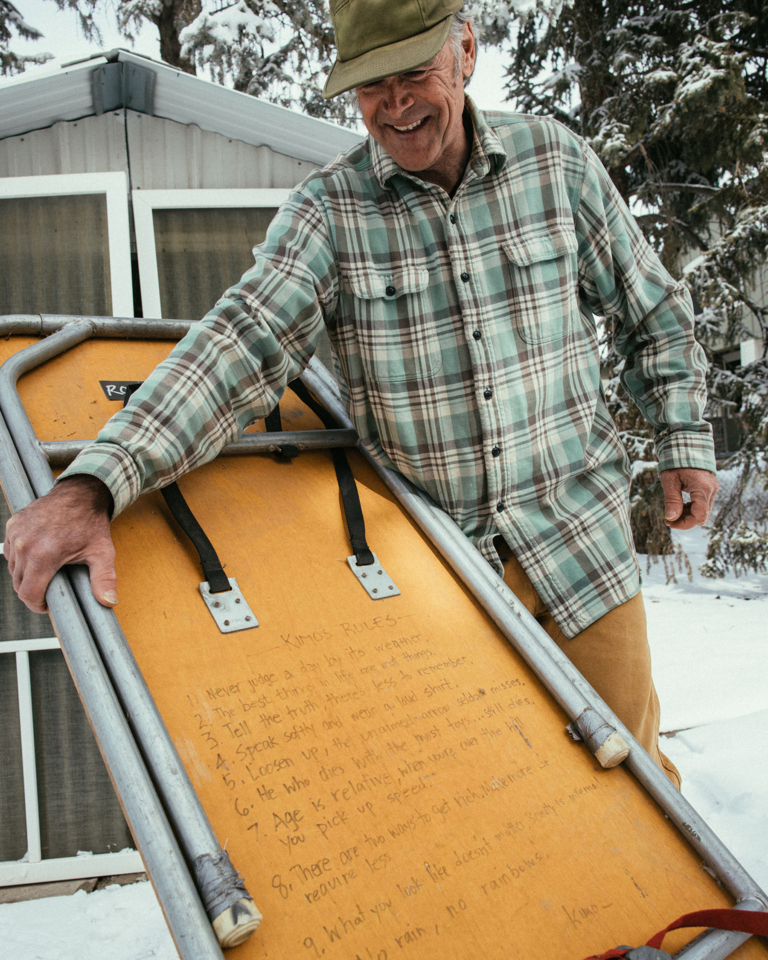
While Davies is up on the summit of Grandeur, ultrarunner and aid-station veteran Roch Horton stays below, keeping the pierogies sizzling and sports drinks at the ready.
One day ago, this 20- by 30-foot area at the base of Grandeur Peak was covered in 3 feet of snow. Volunteers worked for eight hours to dig it out, then spent hours more laying down carpeting, setting up the tents and batteries, erecting the field kitchen and decorating the pit toilets with candles and potpourri. “I like the idea of having bookends,” Horton says. “On one end, the race is tough. You’re climbing in the cold and wind, at nighttime, on a steep trail. But then you have the juxtaposition of a soft little couch and a down blanket and a waffle and cool music and nice lighting. You get the best of both worlds: suffering and pleasure at the same time.” For Horton, setting up this aid station is like being the stage manager for a rock concert. Grandeur is the amphitheater. The fight for breathable air is the music. Campbell may be the star, but everyone is part of the band.
Elaborate aid stations—pit stops with food, drinks, volunteers and sometimes even medical staff—are commonplace at long trail races. At RUFA, the concept goes far beyond nutrition and safety. Taking care of runners, and of each another, is the race’s very reason for being.
Salt Lake City has some of the best mountain access, and best trail running, in the US. It also has some of the worst air quality. In the winter, temperature inversions form and the warm air up high traps the cold, dirty and often polluted air in the valley below. It can create hazardous pollution episodes that often linger for days at a time and can be severe enough to make running unsafe.
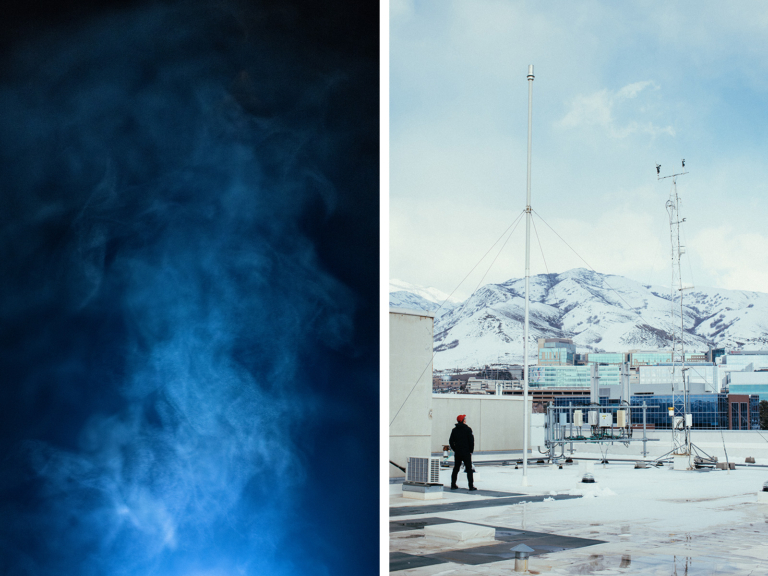
Left: Clean, cold air above 8,000 feet. In Salt Lake City, winter mountain running is a way to escape the smog.
Right: Salt Lake City’s air pollution often takes the form of an inversion: warm air up high that traps cold, dense and often polluted air in the valley below. The smog can build up for weeks. University of Utah’s professor John Lin tracks it using observation and atmospheric modeling.
Campbell had spent years witnessing this phenomenon from above, as long winter runs took him up into the mountains and out of the smog. Every run was a painful reminder of just how bad the problem was.
In 2012, he decided that bearing witness was not enough. His answer: raise money for a local air-quality nonprofit called Breathe Utah by running up and down Grandeur Peak as many times as he could in 24 hours. Friends rallied to support him. Some came to run while others came bearing snacks or, in Davies’ case, Campbell’s favorite order from a local burrito joint.
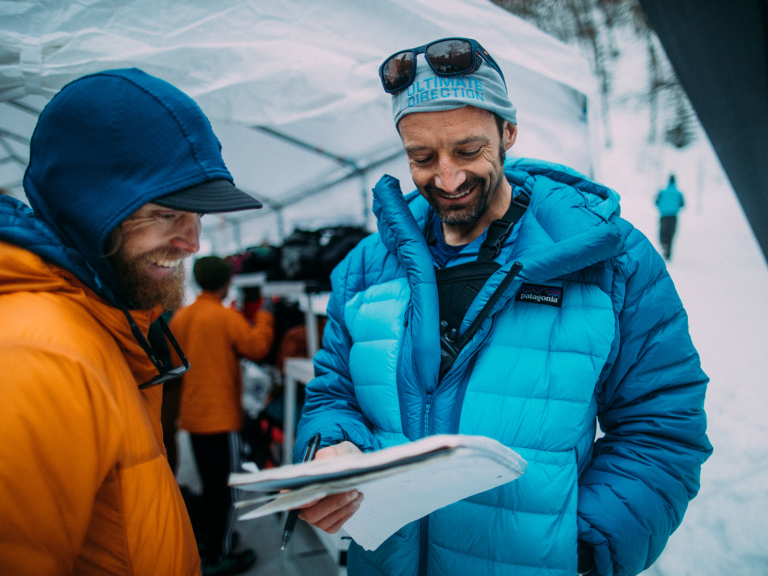
Luke Nelson (left) in rest mode between laps, and Jared Campbell in race-director mode.
Each year, Campbell’s 24-hour endurance fundraiser grew—a few friends one year, a few more the next. In 2016, when Campbell secured the permits to turn the annual reunion into an official event, he didn’t have to look far for help. Horton volunteered to organize an aid station at the bottom. Davies and a friend hauled a small tent to the top of Grandeur and hunkered down for the night. They handed out cookies and kept tabs on how many people summited. Conditions were bitterly cold. “It was fantastic,” she says.
Seven years later, the scene looks very different. There are more volunteers and more runners—not all of whom know one another on the morning of the race. The infrastructure has gotten more advanced, with iPads, official timing equipment and even an on-site air-quality monitor. The event has also expanded, with RUFA events in Colorado, Montana and Washington, and an annual virtual event reaching across Europe.
But in other ways, the event hasn’t changed at all.
Many of the people here today were a part of RUFA back when it was just Campbell and a few friends fueling laps with peanut-butter sandwiches from the back of his car. Even those who just met seem to treat one another with the familiarity of old friends. Runners check in on aid-station volunteers just as much as the volunteers check in on them.
All the way up Grandeur, people flow in and out of small groups, sharing small talk and offering breathless encouragement to those careening back downhill. The energy only intensifies with the elevation. As Davies and her crew egg runners on toward the peak, an intermittent breeze carries their shouts and whoops all the way down the summit ridge.
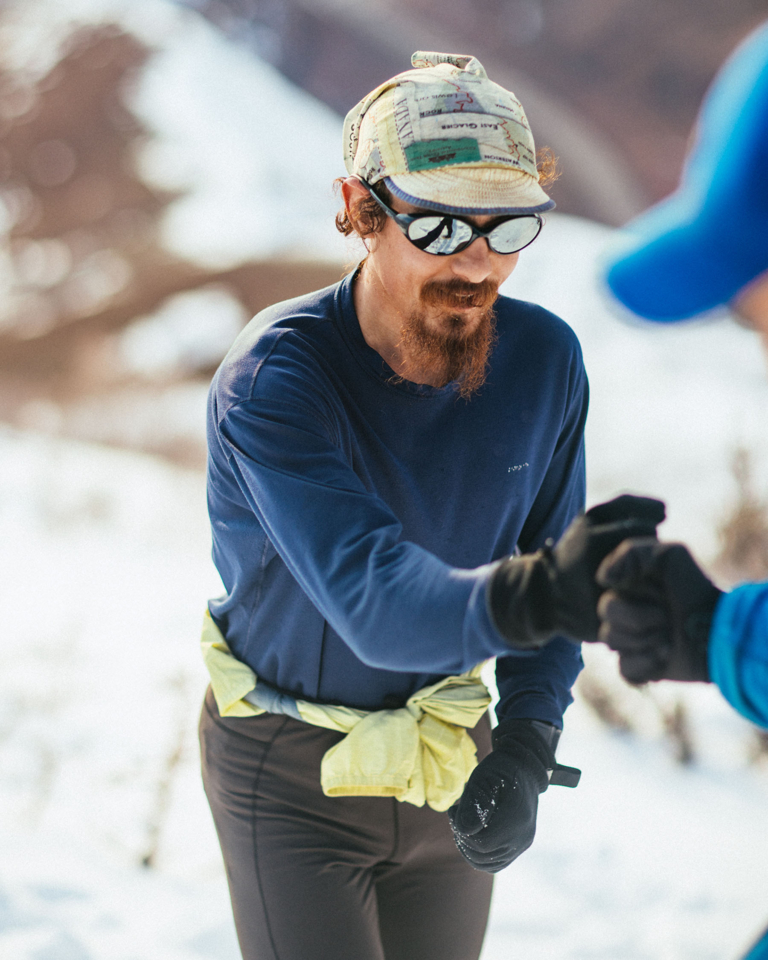
At the 2023 Running Up For Air Grandeur Peak, Blaine Benitez won the 12-hour men’s event, completing 8 laps—about 46 miles and 21,600 feet of climbing.
“Everything about RUFA just fosters this idea of community,” says Katie Brown, a long-time participant and volunteer, who met her husband (and fellow summit volunteer) at RUFA in 2019. Part of it is the format: over the course of the event, runners and volunteers pass each other many times and start to recognize each other. Part of it is the fact that no matter their age, speed or experience, everyone here is working toward a common goal in defense of a shared place and a shared human right.
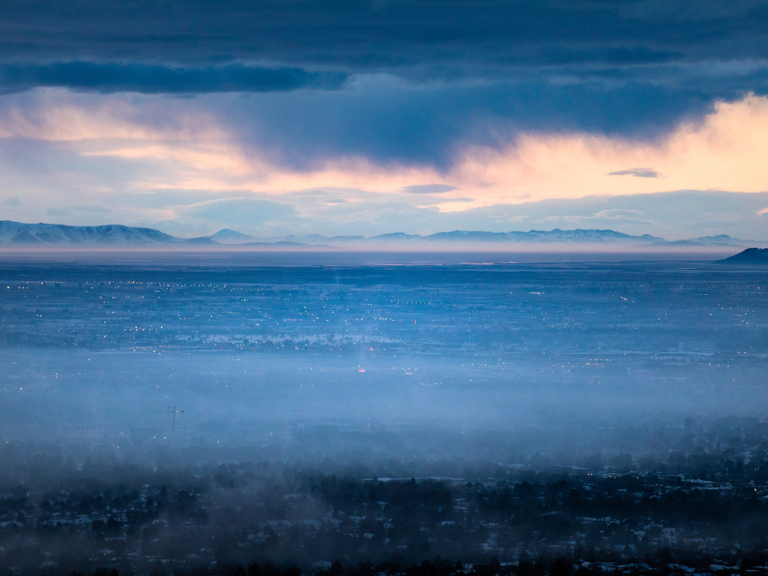
Just how bad has local air pollution gotten? Salt Lake City, Utah.
At the end of the event, three men and three women will earn podium spots. But the real race today—the race to raise money for clean air efforts—was communal, and the resulting success is collective. After all, running laps up a mountain in the middle of winter is far easier with 200 sets of feet helping you set the trail, and changing the course of local environmental policies happens much faster with 200 voices strengthening the cry for change.
